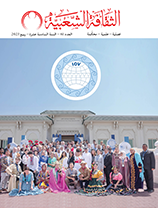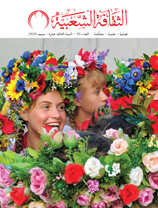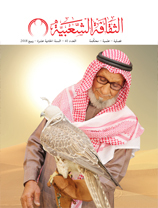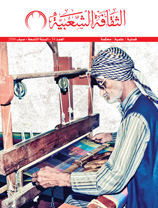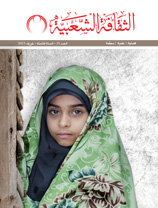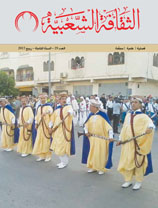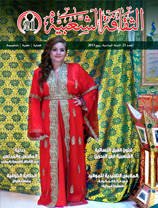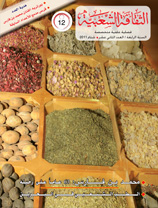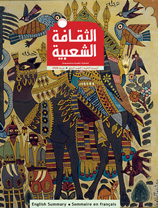Rituals of Death and the Popular Beliefs about Death in the Arabic East: An Anthropological Approach
Issue 8

Bachar Khelif (Syria)
These factors exist in the Arabic East, the Region of Arabic-speaking countries for a million years. Since the pre-history era, there always have been continuity and civilized communication across times. Such continuity was possible thanks to some interactive factors, be it an interaction with the natural environment, the living space or the social environment with its renewed ingredients across ages, which melted in the crucible of the civilized system of the Arabic East. Until now, easterners observe the rituals of burial by seeking to make a small hole close to the gravestone or to leave a sandy soil on the grave for the sake of water-pouring while visiting the grave, and to grow an evergreen plant. The belief among most people now is that this act only makes the grave wet. In reference to different citations in the cuneiform documents dedicated to Arabic East, we find, however, that this ritual extends from pre-history times until now, although it has been five thousand years since it was documented in the cuneiform writings. In fact, it is widely believed that giving sacrifices, be it food or water, to the dead people or performing rituals for them in the mourning day, will protect them from the souls of the other dead people and will satisfy the images or symbols of the underworld. According to the eastern popular belief, we hear even today that if the man is dying, it is said that “his star sank”. Well, I don’t think that the present man realizes the meaning of this description. But the documents of the old Arabic East, available in different eastern cities, provide the answer. Belief in stars really played an important role in the lives of people. Other notion states that every person has one’s own zodiac that controls his or her life and that the way this sign is related to other signs might incur good or evil for the person. The contemporary man hangs the photograph of the deceased, who is dear to him or her, on the wall so as to remember him or her for good. It is also a sort of his or her wish that the deceased had not died but had stayed alive or a wish for the eternity of the memory about him or her. These noble human feelings reflect their real echo since the advent of human civilization, but the artistic style of their expression is different. If we go back to the ancient Arabic East and the time of agriculture invention in the ninth millenary B. C., we find a phenomenon labeled as “sanctification of grandfathers”, which means separating the skull of the deceased from his or her body and hanging it on the wall of the house for religious reasons. This is what was found in “Al-Muraibot” in Syria and in Jericho (Palestine). The popular belief does not consider the grave as a friendly place for the living people, even if it includes inside a dear deceased man, hence there are customs associated with the grave and its uses in the daily popular live. If, for instance, a man is very hateful of any one, he just has to go to any grave, take a handful of the grave’s soil and sprinkle it over his head in his wedding day. The popular conviction goes that such an act will turn the person into a dead one as the death will move from the dead people in the cemetery to the living person and hence will turn him dead. Popular beliefs also contend that tempering with graves, namely with the ones of good people, trying to demolish the graves or to destroy them, would result in the death and paralayzation of the trespasser on the sanctity of the graves, unless he or she offers a sacrifice, which can be successfully done by slaughtering a female sheep and then giving her to the poor people. We may notice that three certain characteristics distinguish the funeral rituals in the past and present times, which are:First: Pouring water, which is a deeprooted and ancient rite. Second: Providing food and carcasses as funeral sacrifice for the deceased soil, which is also a deep-rooted and ancient ceremony. Third: Laying green branches, myrtle, palm, leaves and flowers on the grave of the dead person, believing that it might refresh the dreary and dull climate of his or her grave. We recognize that the green color is asymbol of fertility, life and spring, to the extent that the popular belief describes the bride in a rainy wedding day as if she is “having a green foot”, as a symbol of life and productivity. The branches of the palm are used in funeral ceremonies, during visits to the graves and also for decorating cemeteries. The relevant studies unanimously agree that the palm tree was the tree of life for the Phoenician people. It was associated in their minds with the Paradise of Aden and also with Ishtar, the goddess of fertility. It was the family tree for the people of Egypt, the Fertile Crescent, and the Arabian Peninsula. The available information indicates that pre-Islamic Arab people worshiped the Palm Tree. In fact, an anniversary honoring this tree was held every year in the Yemeni city of Nijran. Also, the symbolism of the palm tree is evident on the cultural and anthropological aspects as it is associated with death and then resurrection or with the succession of beginning and continuity.











